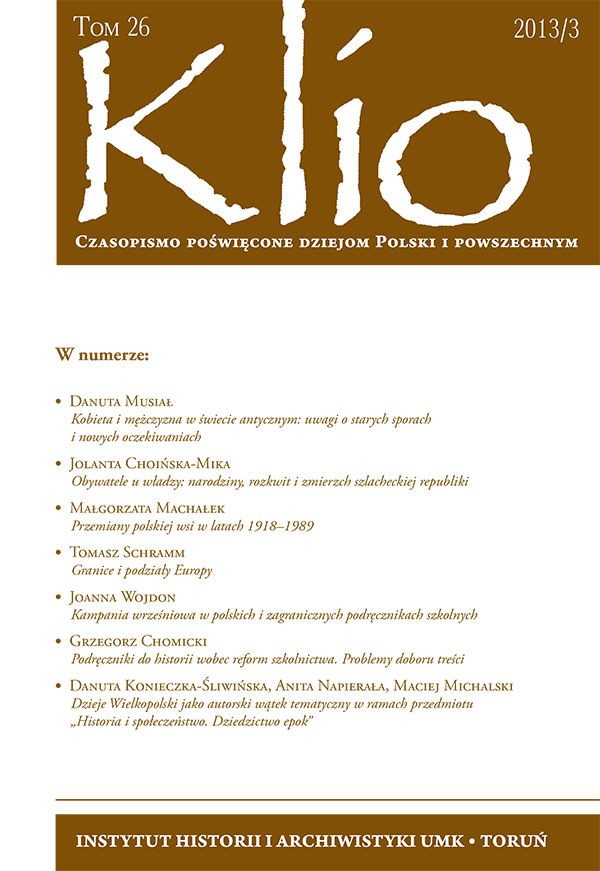Borders and divisions of Europe
DOI:
https://doi.org/10.12775/KLIO.2013.034Abstract
Author started from establishing a notion “Europe” as derived from a specific historical formed civilization. A basis of European identity may be derived from Greek-Roman-Christian heritage of ancient Rome, which suppose to be a “necessary minimum”. Author did not omit to discuss a relation between this “minimum” and a barbarian issue.
Outer borders of Europe – a line between Europe and “non-Europe” – were outlined along a meeting of a barbarian world and an Islamic world. For two ages in different way were revealing divisions of Europe on West and East, and, on the other hand, on South and North. Among the first of those, Central Europe was developed. Those divisions were established on religion and cultural, as well as on socio-economic, basis. Nevertheless, European identity envisioned in chronological order, nowadays loses its accuracy, what may announce a quality manner change.
Downloads
Published
How to Cite
Issue
Section
Stats
Number of views and downloads: 2037
Number of citations: 0



